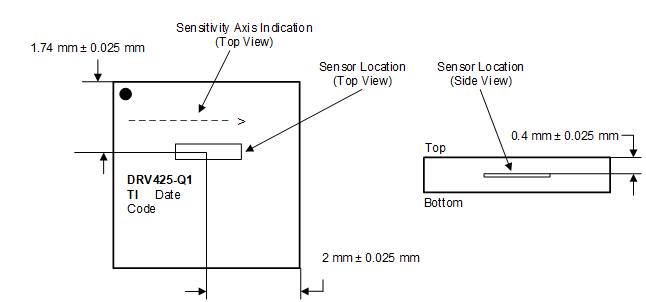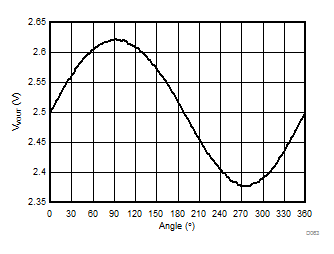ZHCSK74A August 2019 – April 2020 DRV425-Q1
PRODUCTION DATA.
7.3.1.1 Fluxgate Sensor
The fluxgate sensor of the DRV425-Q1 is uniquely designed for high-performance magnetic-field sensors because of the high sensitivity, low noise, and low offset of the sensor. The fluxgate principle relies on repeatedly driving the sensor in and out of saturation; therefore, the sensor is free of any significant magnetic hysteresis. The feedback loop accurately drives a compensation current through the integrated compensation coil and drives the magnetic field at the sensor back to zero. This approach supports excellent gain stability and high linearity of the measurement.
The device package is free of any ferromagnetic materials in order to prevent magnetization by external fields and to obtain accurate and hysteresis-free operation. Select materials that cannot be magnetized for the printed circuit board (PCB) and passive components in the direct vicinity of the DRV425-Q1; see the Layout Guidelines section for more details.
The orientation and the sensitivity axis of the fluxgate sensor is indicated by a dashed line on the top of the package, as shown in Figure 61. The figure also shows the location of the sensor inside the package.
 Figure 61. Magnetic Sensitivity Direction of the Integrated Fluxgate Sensor
Figure 61. Magnetic Sensitivity Direction of the Integrated Fluxgate Sensor The sensitivity of the fluxgate sensor is a vector function of the sensitivity axis and the magnitude of the magnetic field along that axis. Figure 62 shows the output of the DRV425-Q1 versus the angle of the device orientation relative to a constant magnetic field.
